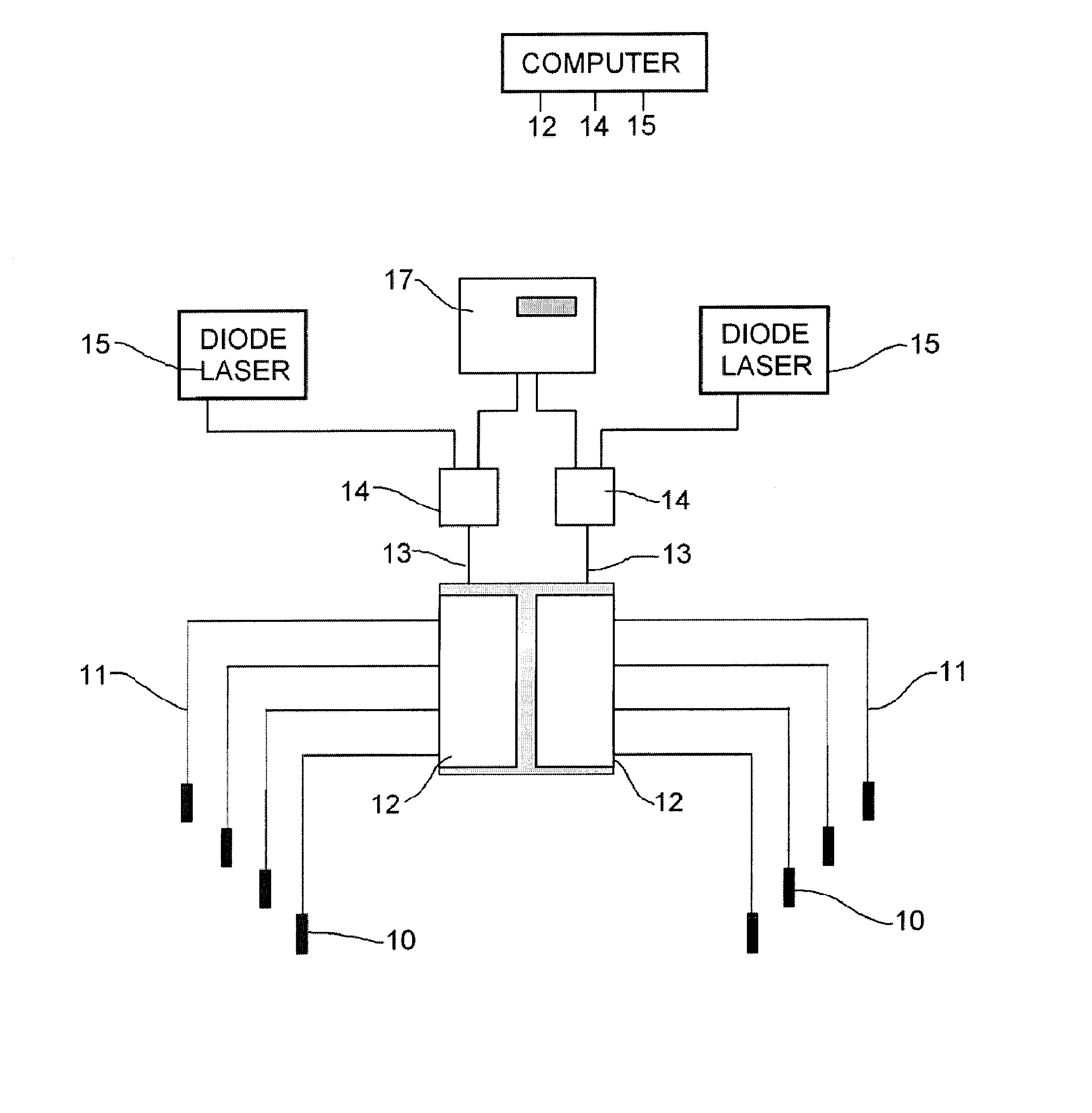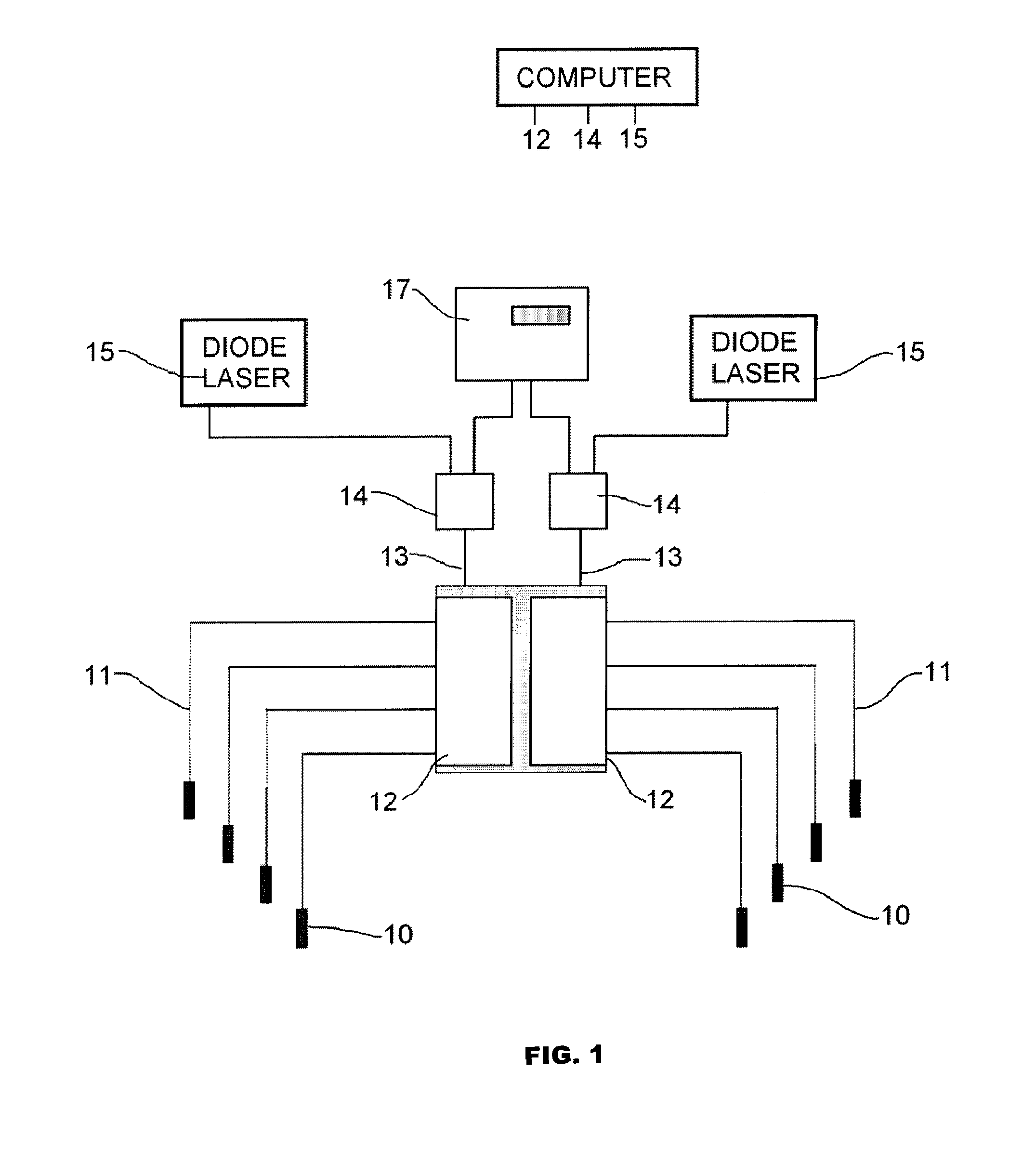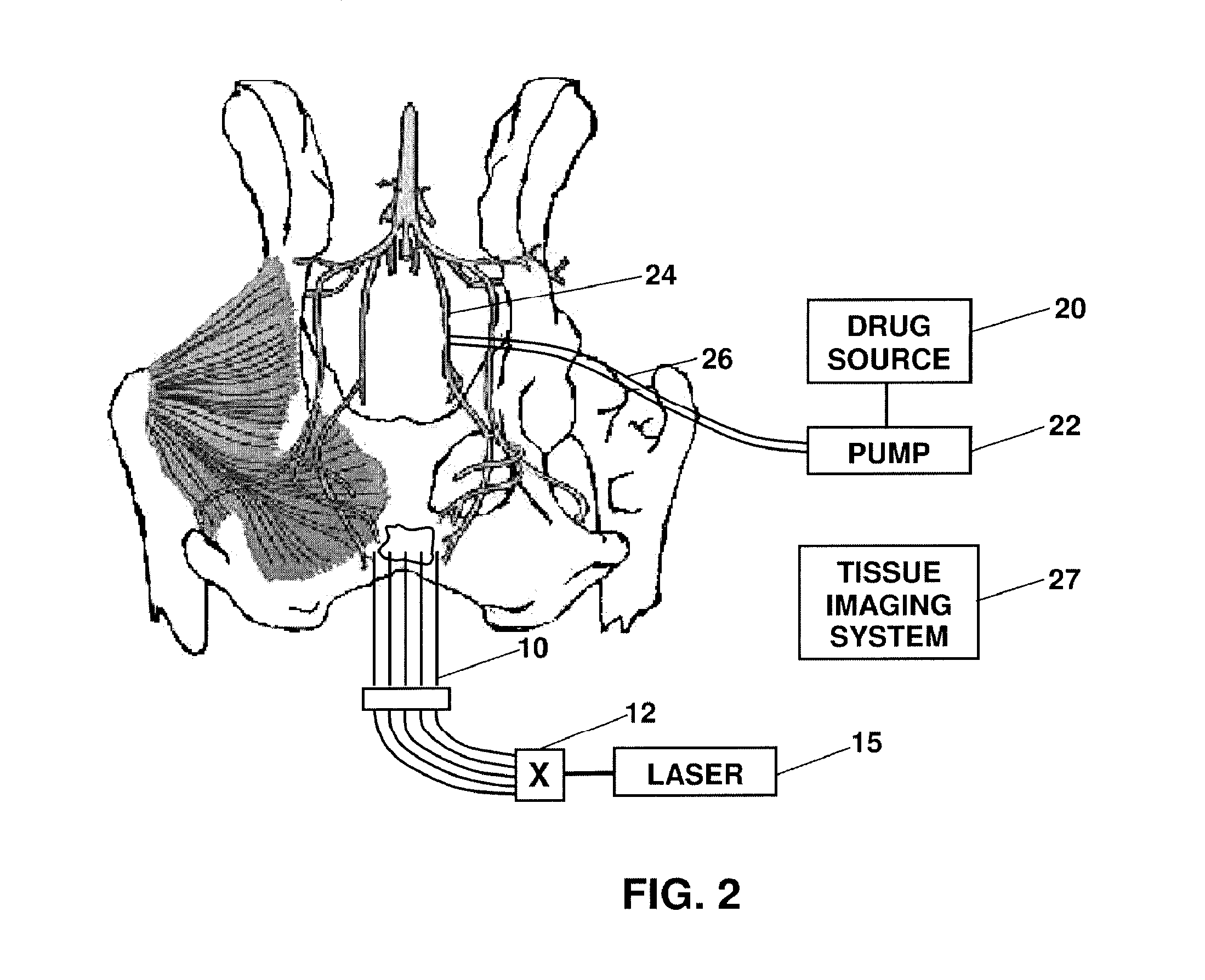Switched photodynamic therapy apparatus and method
a photodynamic therapy and switch technology, applied in the field of switchable photodynamic therapy apparatus and method, can solve the problems of cell death and injury, limited optical transparency of human tissues, and shallow depth for the treatment of most solid tumours
- Summary
- Abstract
- Description
- Claims
- Application Information
AI Technical Summary
Benefits of technology
Problems solved by technology
Method used
Image
Examples
Embodiment Construction
[0023] In this patent document, the word comprising is used in its inclusive sense and does not exclude other elements being present. The indefinite article “a” before an element also does not exclude more than one of the element being present. The term “light” or “drug activating light” refers to electromagnetic radiation of a wavelength suitable for drug activation, for example phototoxic drug activation. An “optical” element is an element capable of transmitting and guiding drug activating light. The term “probe” refers to a device capable of delivering drug activating light to target tissue. Probes are typically connected to laser light sources through optical fibres. A probe may also be used as a receiver of light when the probe is connected to a detector. A “phototoxic drug” is a drug that is activated by application of light, and includes lypo-phyllic drugs. The phototoxic drug preferably has a first pass effect, in which most of the drug is taken up in the targetted tissue o...
PUM
 Login to View More
Login to View More Abstract
Description
Claims
Application Information
 Login to View More
Login to View More - R&D
- Intellectual Property
- Life Sciences
- Materials
- Tech Scout
- Unparalleled Data Quality
- Higher Quality Content
- 60% Fewer Hallucinations
Browse by: Latest US Patents, China's latest patents, Technical Efficacy Thesaurus, Application Domain, Technology Topic, Popular Technical Reports.
© 2025 PatSnap. All rights reserved.Legal|Privacy policy|Modern Slavery Act Transparency Statement|Sitemap|About US| Contact US: help@patsnap.com



